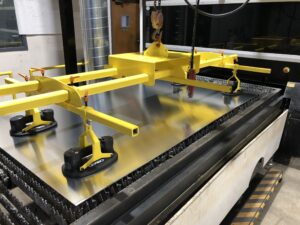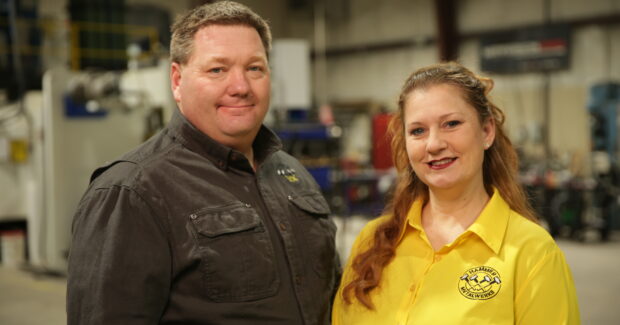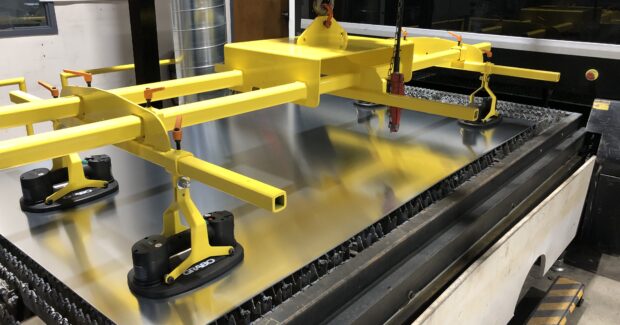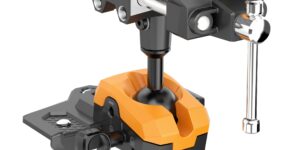It Couldn’t Happen at a Better Time… the Metalworking Industry is Taking Charge
Investments in technologies support shops as they hire inexperienced operators, who thrive using simpler interfaces and other advances to refine operations and production processes.
Posted: April 22, 2024

What stands out about the National Association of Manufacturing’s Outlook Survey for the first quarter is the overall result that respondents are investing in new technologies and digitalization companywide (28%) to improve operations and supply chain resiliency (at a time when 25.8% of those respondents list trade uncertainties as a major business challenge).
Continued investments are taking place in the metalworking sector. For one company: “Rather than looking for highly skilled — and more expensive — operators, which are in short supply, we looked for technology that could make the operator’s job easier, and help them get up to speed faster,” said Derek Hammer, president of Hammer MetalWerks in Indianapolis, Ind., whose business operates a 3 kW fiber laser machine. The company provides metal fabrication and laser-cutting services and carries out small-to-medium production runs and parts for a huge range of industries. They also offer secondary processes such as welding, design and powder coating.
Hammer MetalWerks utilizes ToolBox from Tempus Tools, a laser cutting quoting software that is calculation based. It tracks material price, cutting time, labor, and other relevant information in order to generate quotes quickly and accurately.
Hammer said ToolBox provides “work orders to the shop floor with lots of details that the operators don’t have to find or calculate themselves. One example for us is that sheet sizes are all metric, and we use imperial gauges in the U.S. — which can often lead to errors if not converted correctly.
“Additionally, ToolBox is very user friendly, so staff that are used to working with computers in a broad range of contexts can pick up the program quickly and begin working with it,” Hammer stated.
The Figures Speak for Themselves
NAM’s Outlook Survey’s respondents are positive about their outlooks with 68.7% responding positively (up from 66.2% in December 2023). While workforce challenges continue to top the list of concerns, the percentage of respondents citing this as their top concern dropped to the lowest reading since fourth quarter of 2020, which could be a sign of possible cooling in the labor market.
Respondents also stated they are using AI models to increase efficiency (31.0%), to inform predictive maintenance (23.1%) and to assist product design and development (16.9%), among other functions.
In March, another positive manufacturing business climate indicator recorded for the first time in 16 consecutive months that the PMI stood at 50.3, up from 47.8% in February. “The U.S. manufacturing sector moved into expansion for the first time since September 2022,” said Tim Fiore, the chair of the Institute for Supply Management’s Manufacturing Business Survey Committee. “Demand remains at the early stages of recovery, with clear signs of improving conditions. Production execution surged compared to January and February, as panelists’ companies reenter expansion. Suppliers continue to have capacity but are showing signs of struggling, due in large part to their raw material supply chains.”
ISM reported that nine manufacturing industries (of the 15 they track) reported growth in March, including fabricated metals, petroleum and coal, primary metals, transportation equipment and food and beverage products.
A respondent from the transportation equipment industry stated they were: “Expecting to see orders and production pick up for the second quarter. Suppliers are working with us to help drive costs down, which will help improve the margin for the rest of the year and deliver growth in 2025.”
A respondent from the fabricated metals sector stated: “Business is still strong — we are meeting and exceeding our forecasts. So far, we’re not hearing anything negative with our customers as far as ongoing business is concerned — it’s the same for raw material suppliers, nothing negative.”
Expectations and optimism are running high regarding the metalworking sector’s outlook for the second half of the year. Are you prepared to make the most of the opportunities?












